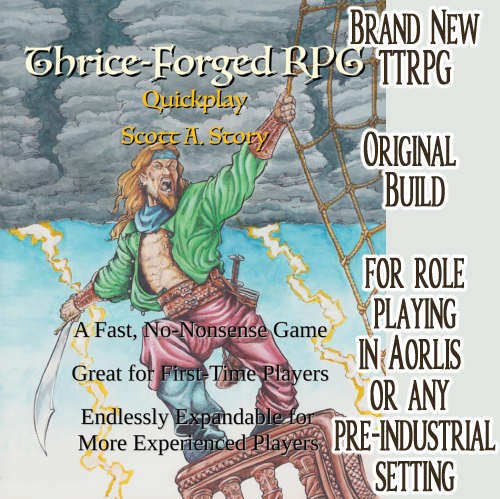The medieval conception of magic and its underlying mechanics is much like our own. They believe in stellar rays, or radiant energy, from each of the seven planets that the magician may manipulate to his own ends. Steller rays, in fact, are the fundamental building block of all reality, and the material world is a by-product of them.
What is Magic?
Magic is the art and science of affect change in the world. It is a dependably repeatable mental science and as such is often mixed with science by philosophers, medical professionals, artificers, alchemists and engineers.
Who Uses Magic?
Magic is available to everyone in Aorlis. It can be as mundane as wise woman’s home remedies to a magician’s far-reaching and complex effects on the world. Few practitioners are full-time mages, but use it as a tool to help navigate life. Alchemists, wizards, necromancers, and others practice magic, but magic also is used as a tool for royals, medical doctors, or blacksmiths. This having been said, active magic users are not common and make up perhaps 10% of the population.
Magic Frequency
Magicians believe there are higher and lower planes, with higher or lower degrees associated with each. A higher plane, such as Heaven, has a much higher vibrational frequency, and matter there is more “fine” or “subtle.” Heaven is the realm of gods, angels, and saints. As you travel down the frequency scale, you get to the material world. Further down, as you fall toward Hell, the vibrations get slower, heavier, and cruder. That is the realm of unclean spirits, spiritual scavengers, and demons.
Elemental Magic
While stellar rays are a case of degree, there is also an elemental aspect. The current belief is that the universe comprises four elements: air, earth, fire, and water. The material world exists at the juncture of these four states and is a mix of all four. Many advanced theorists believe in aether, which some consider a part of elemental air; or a fifth, spiritual medium that pervades world’s totality.
Magic and Morality
Magic has a moral component. White magic, also called stellar magic, the right-hand path, or ritual magic, is considered good. People regard natural magic as neither good nor evil, but it uses the powers of nature to produce effects that nature would not otherwise produce. People consider black magic, also called sorcery, or the left-hand path, to be evil, or morally gray at best. Like any tool, magic is amoral. Good or evil are a matter of how it’s used. Religious practices are often indistinguishable from magic. Necromancy is regarded as evil, but that is not necessarily the case. Practicing exorcists, using their powers for good, are just another sort of necromancer.
Magic and Religion
Anywhere in Aorlis. Magic used in religion for miracles is called theurgy, and priests and monks are more likely to be magicians because of their greater education. Indeed, most necromancers are monks and priests.
Magic and Time
Finally, there is an element of time, being the past, present, and future. People exist in a perpetual “now,” or the present, but the past and future both exist, and it is possible for magic to reveal events from either.
Magic and Visualization
One aspect of intent, or the art of focusing one’s mind, is visualization. This suggests that significant power can be focused into pictures, sigils, talismans, glyphs, and symbols.
Magic and Voice
The magician’s tools, no matter what background he comes from, include true will, intent, and voice. Academics believe that the spoken word possesses its own aural vibration or radiation, which helps the magician’s will and focused intent access the underlying mechanics of the universe. Most mages perform magic in their native language, the vulgate, but many believe that Tol, the original human tongue, is much more potent. Few magicians know Tol. Old Karmithian is also a popular occult language.
Magical Outcomes
Regular day-to-day magic has minimal effect. At the far outside possibility, magic has been used to animate objects, summon weather, see things far removed in space and time, summon spirits, curse victims, and know unknowable things. The possibilities almost are limitless.












Comments